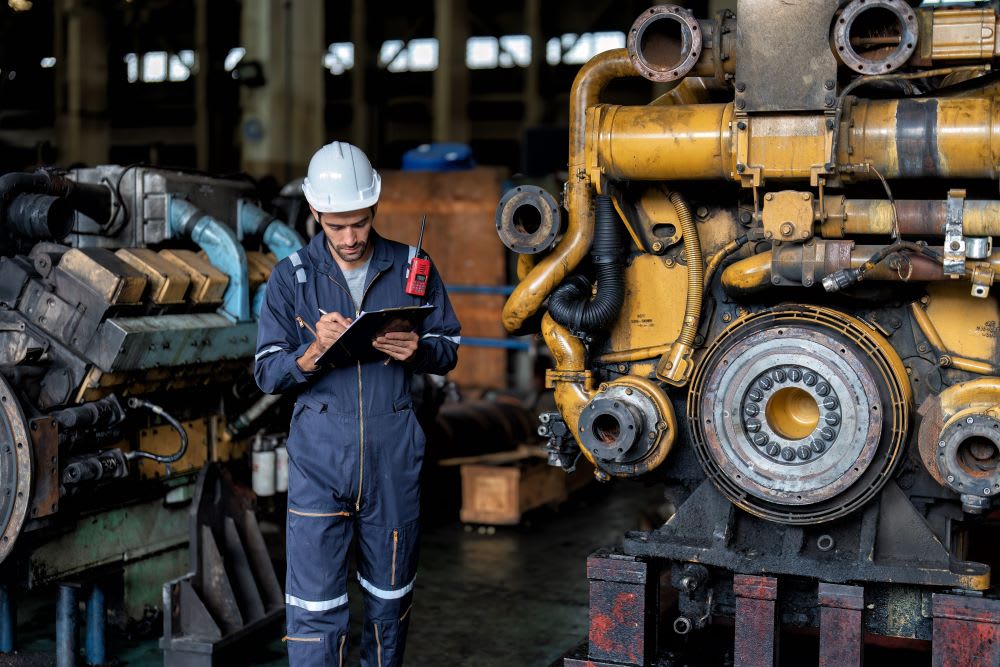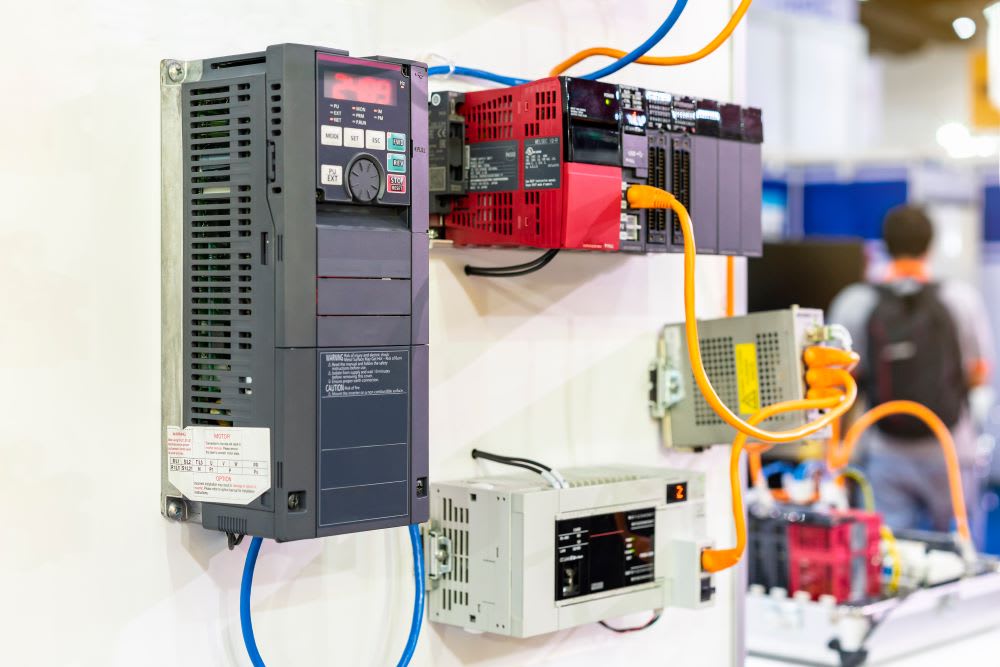- Published 19 Apr 2024
- Last Modified 19 Apr 2024
- 5 min
Mining Efficiency: How Variable Frequency Drives Are Changing the Game
Discover how Variable Frequency Drives are impacting the Australian mining industry, reducing energy consumption and improving operational efficiency.

The mining sector consumes roughly 500 petajoules per year – accounting for 10% of Australia's total energy use, as per statistics released by the Australian Renewable Energy Agency (ARENA). With these staggering figures, the demand for energy efficiency and sustainability couldn't be more pressing. This consumption has also been on the rise, increasing at an annual rate of 6.0% over the last decade, primarily due to higher mining volumes.
In response, the industry is turning to Variable Frequency Drives (VFDs), key energy-efficient equipment reshaping operations by improving energy use and process control and reducing operational costs. This blog explores how energy-efficient equipment is instrumental in driving forward the Australian mining industry's efficiency and sustainability efforts.

What Are Variable Frequency Drives?
Variable Frequency Drives (VFDs), also known as inverter drives, are key in modernising mining operations due to their ability to finely tune the speed of electric motors. These devices work by altering the power supply's frequency and voltage supplied to an electric motor, a feature that stands at the core of their functionality. This ability is a shift in how mining operations can manage energy consumption and operational efficiency.
The principle behind VFDs involves converting the incoming electrical supply into a variable frequency and voltage output. This conversion process is key to their operation, allowing for the precise control of motor speed.
Why Energy Efficiency and Process Optimisation Matter
Motors use an especially significant amount of energy. Most motor energy consumption in the industry comes from mid-size motors with output powers ranging from 0.75kW to 375kW. Against this backdrop, the role of VFDs becomes crucial. These devices offer a solution by allowing operations to utilise energy more efficiently and streamline processes, thereby reducing both operational costs and environmental impact.
In mining operations, VFDs control the speed of motors for pumps and fans. These applications often involve variable torque loads, which are governed by the 'cube law'. This fundamental principle dictates that a modest reduction in motor speed can lead to a disproportionate decrease in the power required. Specifically, reducing motor speed by 20% can result in a 50% reduction in the power needed to operate the equipment.
In a typical mining operation without VFDs, motors run at a constant speed, regardless of the actual need, leading to significant energy waste and inefficiency. In contrast, inverter drives adjust the motor speed in real time to match the specific requirements of the task at hand, whether it’s conveying, drilling, or processing materials.
Benefits of Variable Frequency Drives in Mining

VFDs offer several benefits that address both operational efficiency and environmental sustainability. Here, we explore the primary advantages of incorporating inverter drives into mining processes:
- Energy savings: The primary advantage of inverter drives is energy savings. They adjust motor speeds to avoid unnecessary power use, directly translating into cost reductions and lower CO2 emissions. This optimisation of energy use is vital in an industry where operations are both power-intensive and constant.
- Better process control: With VFDs, mining operations gain a higher level of process control. This adaptability improves productivity, enhances output quality, and minimises downtime, making operations smoother and less prone to equipment wear and tear.
- Equipment longevity: Inverter drives reduce mechanical stress on equipment by controlling motor acceleration and deceleration. This not only extends machinery life but also decreases maintenance costs.
The Role of Variable Frequency Drives Technology in Australian Industry
The Australian government has taken significant steps to ensure that industries move towards sustainability by mandating energy star rating labels on motors. These labels, which are compulsory for all regulated motors, provide a clear indication of the motor's efficiency at a glance, guiding companies in making informed decisions about their energy use. In response to stringent energy consumption regulations, companies across Australia are increasingly seeking energy-efficient solutions.
This push towards energy efficiency is part of a broader trend across the Asia Pacific region, as evidenced by the market performance of Variable Frequency Drives. Valued at an impressive US$9.5 billion in 2023, according to Global Market Insights, this market is on a trajectory to grow at a Compound Annual Growth Rate (CAGR) of over 4.8% from 2024 to 2032. This growth is driven by the escalating demand for energy-efficient equipment, further accentuated by the rigorous energy consumption regulations in place.
Integration Challenges and Solutions
Despite the clear benefits, integrating VFDs into existing mining operations can present challenges. These include:
- Compatibility issues: Older machinery might not integrate seamlessly with modern VFD technology, leading to potential compatibility problems.
- Communication concerns: Effective communication between new inverter drive systems and existing legacy equipment could present challenges.
- Operational knowledge and training: The need for staff knowledgeable in the operation and maintenance of VFDs highlights the importance of comprehensive training programs.
- Cost considerations: The significant initial setup and investment costs associated with integrating VFDs may deter some companies from proceeding with implementation.
However, solutions such as phased implementation plans, expert consultations, and investing in adaptable drive technologies can mitigate these challenges, paving the way for a smoother transition to more efficient operations.
The future of mining with inverter drive technology looks promising, with continuous advancements expected to further enhance their efficiency and applicability. Emerging trends such as IoT integration and smart automation are set to make VFDs even more instrumental in mining operations, driving forward the industry’s commitment to sustainability and efficiency.
Innovate with RS Australia
RS Australia is committed to supporting the mining industry's evolution by offering an extensive range of Variable Frequency Drives (VFDs) and other solutions designed to meet the challenges of mining operations. With a focus on quality, reliability, and sustainability, RS Australia is your partner in navigating the future of mining, encouraging the industry to embrace the critical benefits of incorporating VFD technology for enhanced efficiency and reduced environmental impact.
Explore RS’ solutions for the mining & utilities sector.
Popular Brands for Inverter Drives
Schneider Electric
Schneider Electric's inverter drives combine innovative design with superior performance, meeting the stringent demands of multiple sectors for safety and efficiency.
Related links
- Variable Frequency Drives: What and Where are They Used?
- Elevating Mine Safety: The Essential Role of Proximity Sensors
- The Impact of Servo Motors on Automated Drilling Equipment in Mining
- Under Pressure: How Advanced Pressure Sensors Are Transforming Mine Safety and Operational Efficiency
- The Role of HVAC Systems in Mining Air Quality & Humidity
- Understanding Conveyor Parts and Maintenance to Boost Mining Operation Efficiency
- Eaton External Keypad with OLED Display for use with DA1 Series Power XL Variable Frequency Drives, DC1 Series Power XL
- Variable Speed Electric Motors in HVAC Systems for Energy Efficiency